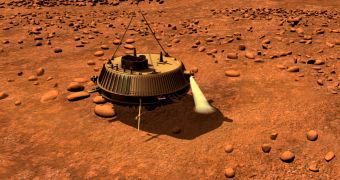The Huygens probe landed on Saturn's moon Titan seven years ago. It lasted on the surface only about 90 minutes, much more than it was anticipated. Still, even now, the probe continues to yield important discoveries.
For example, scientists have now determined the composition of the soil where the probe landed, based on movement data sent back by the probe.
Landing and coming to a stop on Titan took only 10 seconds, though Huygens spent two hours and a half parachuting to the surface before that.
The probe first hit the ground and bounced back, indicating that the soil where it landed was soft enough to fling it back in the air while still leaving an imprint, a 12-cm (4.72-inch) hole.
It then hit the ground again and slid along for a short while before coming to a complete stop 10 seconds after the initial impact.
"A spike in the acceleration data suggests that during the first wobble, the probe likely encountered a pebble protruding by around 2 cm from the surface of Titan, and may have even pushed it into the ground, suggesting that the surface had a consistency of soft, damp sand," Dr. Stefan Schröder of the Max Planck Institute for Solar System Research, who lead the paper describing the landing, wrote.
The probe also kicked up some dust when it landed, which stayed aloft for about four seconds after the impact. Scientists believe that this indicates the material was dry so there had been no recent precipitations in the area.
Titan is believed to have liquid methane and ethane rains, but this only happens once every few decades or even centuries, in a flash storm followed by a long period of drought.
Scientists were prepared for several types of landing surfaces, including an ocean, and designed the Huygens probe accordingly.

 14 DAY TRIAL //
14 DAY TRIAL // 